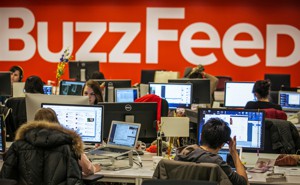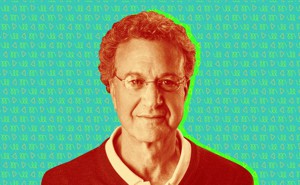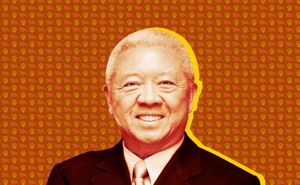시장에 대한 새로운 접근과 해석을 위하여 – 다른백년
다른백년과 함께, 더 나은 미래를 향해
기획칼럼
이래경의 [제3섹타 경제론]
시장에 대한 새로운 접근과 해석을 위하여
자본의 탐욕에 대한 이념적 종속이냐? 인간의 자유 실현을 위한 실천적 도구이냐?이래경 2019.01.24 1 COMMENT
한겨레 신문에 ‘을의 경제학’이라는 제목으로 칼럼을 연재하고 있는 장흥배 님이 1월 10일 ‘시장은 어떻게 지배하는가’라는 주제로 쓴 글의 일부를 아래로 다시 소개한다..
“최저임금제의 의의는 임금 최저선의 결정(이라는 영역)에서 시장에 대한 사회의 우위를 확인한 것이다. (중략) 문재인 정부하에서 최저임금제의 역사적 의미는 시장의 힘을 극복하려는 것이었지, 이에 굴복하라는 것이 아니었다. 촛불항쟁, 여야 대선주자들의 공약 경쟁, 이를 통해 들어선 정부의 정책 수립을 통해 탄생한 최저임금 1만원이 가리키는 정책 방향은 공룡 재벌에 의해 망가진 공정거래 질서의 복원, 만약의 고용 위기를 상쇄할 과감한 복지와 소득재분배, 부동산 지대경제의 청산 등이었다. 요컨대 시장과 경제를 16.4%의 최저임금 인상이 수용될 수 있는 환경으로 개혁한다는 것이 인상을 결정한 사회적 합의의 요구였던 것이다. 달리 보면 이 모든 과제에서 허탕을 치고 역진하는 정부가 최저임금 인상 효과를 무력화하는 온갖 꼼수로 나가는 것은 예정된 수순일 수밖에 없다.
좌절로 가는 최저임금 1만원 실험에서 남아야 할 교훈이 있다. 지배계급은 언제나 자신들의 계급적 이해에 따른 선택을 객관적인 시장의 힘에 의한 제약으로 위장한다는 것이다. (반작용적) 역효과 명제는 이를 통해 대중의 사고를 효과적으로 지배한다. 실상 신비한 시장의 힘으로 포장된 상자를 뜯어보면 재벌, 상가와 아파트 자산가, 상위 10% 고소득자들의 경제적 이권을 유지·확대하려는 (탐욕의) 이해가 대개의 내용물이다”
명쾌한 선언이다! 시장은 당연히 시민사회의 필요와 합의에 따라 작동하고 역할을 해야 한다 그런데 촛불의 이름을 앞세워 집권한 문재인 정부에서조차 한국 사회의 모습은 시장논리와 경제성과라는 미명으로 극소수의 기득권층 탐욕이 합리적인 것처럼 포장되고 이들에 의해 전일적으로 지배당하는 공간으로 변모하였다.
본인과 가족들의 패악행위 등으로 스스로 경영능력이 없음을 만천하에 노출한 조양호 대한항공 그룹회장의 경영권을 박탈하기 위하여 마땅히 이루어져야 할 연기금 등 공공투자 지분의 주주권 행사(stewardship)를 유보하면서 오히려 수구언론과 보수진영에서 이를 마치 사유재산권과 경영권의 침해하는 것으로 오도하는 것에 암묵적으로 동조하고, 명백하고 노골적으로 탈법과 불법을 저지른 이재용을 삼성이라는 한국 대표기업의 주주이자 경영자라는 단 하나의 이유로 구속을 면책하고 석방하였다. 결국 대한항공과 삼성이라는 거대한 기업집단들이 국민적 자산이 아니라 일개 가문의 전횡적 사유물이라는 것을 공인한 셈이다.
시민들에게서 수임한 개혁을 추진하는 대신 애매하게 삼성과 연대하며 황당하게 시장의 논리를 전면적으로 내세웠던 지난 세월의 참여정부에 이어, 역시나 이익 방어에 노련한 기득권의 간교와 교언영색으로 포장된 예의 시장논리에 포획되고 투항하면서, 인간다운 삶을 보장하는 최저임금제 실현과 노동시간 단축이라는 역사적 명제에서 말머리를 돌려 뒷걸음친 문재인 정부는 이제 더 이상 촛불과 시민을 정권의 명분과 장식용으로 운운해서는 아니 된다.사진: pixabay
시장은 기본적으로 무죄이다. 문제는 시장이라는 이름으로 포장하여 작동하는 기득권과 자본의 탐욕과 이를 정당화하는 논리와 이데올로기와 매카니즘, 그리고 이에 조응하여 형성되는 정치 경제 사회 문화 전반에 걸친 구조가 문제이다. 이에 한걸음 더 들어가 시장이라는 일반적이고 포괄적인 용어를 시장, 시장가격, 시장기구(역할), 시장경제 등으로 다시 세분하여 들여다 보고자 한다.
경제학 사전에 의하면 시장은 일군의 공급자와 수요간에 성립하는 재화 내지는 용역의 교환 또는 매매의 관계 전체를 지칭하는 용어이다. 역사적 흐름으로 볼 때 상품경제가 발달하지 않은 시대에는 교환 내지는 매매 행위가 특정 장소에서 이루어졌으나, 상품경제가 일반화된 이후에는 구체적 매매 행위에 더하여 개념적 추상으로서 시장이 존재하면서 이를 바탕으로 형성된 관계와 범위의 내용이 특정 장소를 대신하게 되었다고 적고 있다.
아담 스미스 이래 경제학의 핵심은 가치에 대한 논쟁과 시장에서 가격이 형성되는 과정에 관한 것일 것이다. 개념으로서 가치와 시장 가격 간에 존재하는 괴리에 대한 관점과 해석이 지난 수백 년간 서구를 중심으로 이루어진 경제 산업의 내용을 역동적으로 규정해 왔다고 해도 과언이 아닐 것이다. 경제학을 전공하지 않은 필자는 다만 기업인으로서 30여 년간 실물 경제를 체험한 바탕으로 경제와 시장에 대해 기존의 논쟁과는 다른 의견을 만용스럽게 개진해 보고자 한다.
육체라는 유기체적 형태를 지닌 인간에게는 의식주의 해결이라는 절대적 필요가 존재하며 어떠한 상황과 조건에서도 이를 충족하는 재화와 서비스가 제공되어야 비로소 해당 사회가 지속될 수 있다. 이를 해결하려는 국가단위의 시스템을 현대적 의미에서 복지의 사회안전망 이라고 할 수 있을 것이다. 다행히 수 차례의 산업적 혁명과정을 통하여 인류의 노동 생산성이 획기적으로 높아지고 기본적으로 의식주의 수요를 해결하면서, 이제 추가적으로 진행되는 생산(경제)활동은 역사의 흐름이라는 시간적 요소와 더불어 사회와 정치적 관계구조 속에서 상대적이며 개별적으로 형성되는 수요와 연동하여 다양하게 전개된다.
현장에서 물물교환과 단순한 매매가 이루어지던 시대를 지나 근대에 이르면 위에 언급한 다양한 형태의 시장과 사회적 권력구조 속에서 집단적 공급과 수요의 균형적 만남을 통하여 시장가격이 형성된다. 이때 시장이라는 구체적 또는 추상적 공간에서 현상적으로는 수급상황과 한계효용의 논리에 따라 가격이 형성되지만, 실현된 가격이라는 현상 뒤에는 생산 및 공급의 수단과 유통망 기반의 소유권을 둘러싸고 형성된 사회적 지위와 정치적 권력구조가 실제적인 힘으로 작동하게 된다.
현대의 대부분 경제학자들은, 알프레드 마샬이 제시하였듯이 일군의 공급과 수요에 의한 균형에 의해서 합리적으로 시장가격이 형성되고 호모 에코노미쿠스로 규정된 인간들에 의해 한계효용적이고 판단논리적인 행위에 의해, 기존에 형성된 가격선이 수학의 법칙처럼 이동한다고 곧이 곧대로 믿지는 않을 것이다.
오히려 시장가격과 변동은 사회평균 생산력에 의한 노동가치에 기반하되 혁신적 기제와 더불어 사회구조와 세력간의 힘에 의해 결정된다고 보는 것이 현실적이다. 이에 더하여 체제의 주류집단이 주도하는 미디어 매체의 홍보와 문화적 환경 속에서 개별적 집단적 심리 욕구가 인위적으로 형성되면서 소비자들로 하여금 의도하지 않은 수요를 촉발하게 만든다.
권력구조에 따라서 전개되는 시장 현실과는 별도로, 이론적으로 이상적인 조건하에 수급 균형과 한계적 효용가치 이론이 작동하는 시장경제에서는 매체 또는 공간이라는 장소를 통하여 재화와 서비스의 공급지를 확인할 수 있으며 가격을 매개로 실제적인 수요가 보내는 신호를 확인하면서, 일차적인 수요와 공급에 대한 정보와 균형의 기능에 더하여, 경제적 유효 자원들을 가장 효과적으로 배분하고 결합시키는 역할과 기능을 갖게 된다고 믿는다.
이러한 관점에 서면 20세기 전체주의적인 극우 파시즘과 극좌적인 스탈린 시대의 경제체제를 경험하였던 빈 학파의 미제스와 하이에크의 신자유주의적 이론과 입장이 일면 타당하고 이해할 만한 것이다. 혹독한 시대적 경험을 겪은 빈 학파의 입장에서 보면 시장이 제 기능을 발휘하기 위해서는 핵심 사항으로 반드시 개인적 자유주의와 무제한적 사유재산권이 전제되어야 하며 국가의 역할을 상기 요소들을 보호하고 보장하는 것으로 제한해야 한다. 좀더 나가서는 인간의 자의적 판단을 배제하면서 시장에게 만능의 능력을 부여하여 신과 동등한 위치까지 올려 놓는다. 이제 시장 만능주의는 ‘반드시 시장에 복종해야 하며 다른 대안은 없다(TINA’)는 강력한 이데올로기로 발전해 나간다.
반면에 폴라니와 케인즈 등의 입장에 서면 자본가들의 지나친 탐욕으로 자유시장의 기능이 실패하고 독점의 폐해가 커져가면서 사유적 자본의 자기조정과 이익실현이라는 매카니즘이 망가졌음에도 불구하고, 생산을 무리하게 강행하여 한편에서는 과잉생산물이 누적되는 반면에 식민지를 포함하여 빈곤과 결핍으로 탈진한 시장의 과소소비 상황이 겹치면서, 이러한 공황적 상황을 정치권력의 강제이던 군사적 물리력이던 국가단위 또는 연합적 지역단위에서 폭력적으로 해결하는 과정으로 파시즘이 태동한 것으로 판단하게 된다. 한마디로 파시즘은 탐욕 때문에 실패한 시장 기능을 강제적으로 작동시키면서 발생하는 반동적 현상인 것이다. 따라서 민주적 절차에 따라 시민들의 선택에 의해 위임된 정치적 강제력으로 잘못된 시장질서와 왜곡된 산업구조에 개입하고 수정을 시도하는 것은 정당하고 마땅한 일이다.
상기의 두 가지 상반된 입장이 대치하는 가운데, 지난 백여 년간 경험을 통하여 되돌아 보면 시장기능과 시장경제의 역할은 결국 역사적 상황에 따른 사회적 정치적 관점과 입장의 문제로 다시 귀결된다. 마치 근대 정치철학의 출발점에서 공히 국가의 성립을 사회계약론으로 해석하면서도, 홉즈는 기존 질서의 권력자인 군주의 입장에 서고 로크는 신흥 유산자 계층의 편협한 이익을 옹호하는 논리를 전개하지만 루소는 모든 공민들의 참여와 합의에 의한 일반의지에 기초하여 근대적 민주주의를 주창한 역사적 경험을 되돌아 보게 한다. 판단의 기준은 ‘무엇과 누구를 위한 것 인가’ 이다.
이에 더하여 제3차 산업혁명이 진행되면서 제조업과 서비스업 간의 생산성 격차에 따른 보몰 효과가 나타나고 제2차 대전 이후 미국의 절대적 경제력에 의해 달러에 기초하여 형성된 기존의 통화시스템에 미국경제가 위축되는 과정에서 심각한 비대칭성이 형성되면서 고전적인 경제와 통화의 이론에 괴리와 변종이 생기기 시작하였다. 급기야 무형재를 중심으로 하는 제4차 산업혁명의 출현과정에서는 기존의 시장경제 이론인 재화 및 서비스의 배타성과 경쟁의 논리 및 수확체감의 법칙 등이 더 이상 유효하지 않은 상황에 직면하게 된다.
금융과 산업변천의 경제사를 오랜동안 연구해온 건국대의 최배근 교수는 최근의 저작 ‘위기의 경제학? 공동체의 경제학!’을 통하여 (기존의) 경제학은 없다고 선언하기에 이른다. 그에 의하면 현재의 경제적 위기는 지난 시기 공업화에서 벗어나는 탈공업화 과정에서 새로운 출구를 찾지 못하면서 과다하게 금융산업에 의존하게 되었고 위에 언급한 달러 중심의 통화시스템과 금융산업이 미국의 패권과 결합하고 세계화를 통하여 전지구적 불균형과 극심한 소득불평등이 확대를 거듭하면서 양극화의 위기 상황을 초래하였다는 것이다. 현재 우리가 직면하고 있는 적나라한 현실이다.
인류의 미래에 대한 희망을 포기하지 않는 최교수는 인터넷 망과 ICT 기술의 기반을 전제하는 미래적 사회에서는 탈물질적인 무형재를 중심으로 전개될 것으로 예상하면서 이러한 무형재적 미래의 산업에는 혁신적 창의성과 자율성이 가치창출의 핵심을 이룬다고 주장한다.
따라서 기존 경제와 산업의 영역에서 지배적 형태였던 소모적이고 경쟁적이고 배제적인 방식에서 탈피하고 데이터와 네트워크를 기반으로 한 협력과 공유라는 새로운 방식과 논리가 도입되어야 한다는 것이다. 혁신 역시 협력과 공동작업을 통해서만 실현가능하고 가치창출방식과 사업모델에도 다다익선의 가치체증의 법칙이 작동하면서 이타자리(利他自利)형 경제 모델과 법칙이 작동하게 된다는 것이다.
이에 따라 교육 역시 타인과 경쟁적인 지식축적의 암기형에서 협력을 기반으로 더불어 함께 과제를 인식하고 문제의 해결을 찾아가는 방식으로 바뀌어야 하며, 금융도 기축통화 중심과 중앙은행의 통제적 개입 방식에서 벗어나 블록체인과 플랫홈 공유를 통한 민주적이며 다원적인 시스템 도입이 불가피하다는 입장을 기술하고 있다.

필자는 최배근 교수가 ‘공동체 경제학’이라는 이름으로 던지는 새로운 문제의식의 도전과 혁신적인 패러다임의 전망에 전적으로 지지하고 동의하면서, 다른 한편에서는 다음과 같은 몇 가지 사항을 보완하여 지적하고자 한다. .
우선 인간이 유기적 육체를 지닌 존재라는 조건으로 인하여, 자연재에 노동을 가하여 의식주의 수요를 해결하는 절대적 기초재와 인터넷 기반과 ICT 기술에 기반으로 새로이 형성되는 무형재를 구별하여 접근하는 것이 필요하다는 생각이다. 기초재 중에서도 의복은 대충 해결된 상태이지만 식량은 여전히 국가단위에서는 안보적 차원의 주제이고 개별적인 시민에게도 일상적으로 중요한 주제이다. 주거의 문제는 특히 투기가 극성을 부리는 한국사회에서는 사회 안전망으로서 복지의 핵심적 내용을 차지하면서 공공의 개입과 역할이 반드시 요구되는 영역이다. 양보할 수 없는 의식주의 전반적 영역에서는 고전 경제학에서 이야기하는 배타적 경합성이 여전히 작동하고 있다는 점을 간과해서는 안될 것이다.
무형재 일반 역시 성격에 따라 섬세한 재분류가 필요할 것이다. 인간의 삶에 있어서 필요한 재화와 서비스의 생산 및 제공의 효율을 드높이고 자유의 가능성을 제고하는 역할이 있는가 하면, 제한된 인생의 시간을 사이버 공간에서 허비하고 무의미하게 하는 낭비성 또는 중독성의 문제를 야기하는 측면이 있다는 것도 염두에 두어야 한다. 경제는 시장에서 표현되는 단순히 수치로만 평가해서는 안되며 인간적 삶의 가치를 고양하는데 주어진 역할을 하여야만 한다.
따라서 최교수도 언급하였듯이 경제학 또는 시장의 개념을 단순히 과거형으로 고전적 해석과 영역에만 머무를 것이 아니라 이에 더하여 새로이 전개되는 조건과 상황에 응동하고 변화를 추구하고 내용을 확장하여야 한다. 마치 물리학에서 뉴톤의 법칙에서 아인슈타인의 상대성 이론으로 그리고 또 다시 양자론으로 변신을 시도하듯이, 폴라니가 언급하는 복합사회(정치, 산업, 사회, 문화, 기술 등이 상호작용하는)속에서 조건과 상황에 따라 과거의 이론을 포괄하면서도 끊임없이 새로운 실험정신으로 접근해야 할 것으로 본다. 역시 중요한 것은 무엇을 위한 시장논리이고 누구를 향한 경제이론인가 라는 근본적 질문에 응답해야 하는 것이다.
인류 미래를 결정하는 것이 과학과 기술이라면 이도 역시 사회적 합의와 정치적 강제를 통하여 개입하고 전향적인 방향으로 유도하여야 한다. 과학과 기술에 중립성은 없다. 지난 칼럼에서도 언급하였듯이 인터넷 환경이라는 공유재와 이를 기반으로 하는 공유경제를 명확히 구분해야 하며 구글과 폐북 그리고 우버 등에서 경험하였듯이 설령 이들이 인류에게 보편적인 편이와 효율성을 제공한다 하더라도 기술 특성상 어마어마한 운용의 과정과 성과를 개인과 특정 기업이 독점하는 것에는 매우 심각한 문제가 제기된다. 따라서 공유기반의 소유와 운용의 과정에 공공적 개입이 반드시 필요하며, 실현된 운용의 성과를 시민사회 또는 인류가 함께 향유할 때만이 명실공히 공유경제라는 용어를 비로소 부여할 수 있다. 지혜와 합의가 필요한 영역이다.
미래에 전개되는 산업사회에서는 로봇과 AI에 의해 대부분의 반복적인 육체노동뿐만 아니라 단순한 정신적인 판단과 관리업무도 대체될 것으로 전망되고 있다. 물론 진행 과정에서 새로운 직업과 일자리가 생기겠지만 숫자나 내용에 있어서 소멸되는 기존의 직업군을 모두 보충하고 대체할 수는 없을 것이다. 이 점이 기존에 있었던 산업혁명들과 차별화되는 지점이다. 속도를 조절하여 실업의 충격을 완화할 수는 있겠지만 단기적인 해결책일 뿐이다. 기존의 산업과 체계에서 새로운 일자리가 자연스레 만들어질 것으로 기대하는 것은 연목구어(緣木求魚)적 행위이다.
근본적으로 기존적인 계약방식의 전일적인 직업으로 받아들이는 일자리의 개념을 바꾸어 가야 한다. 많은 학자들은 자본제 이전에 있었던 자기실현적 자영 형태의 농업과 수공업이라는 오래된 과거에서 새로움을 찾고자 한다. 미래 사회에서는 시장과 기업의 요구사항 대부분이 사회적 역사적 노동의 축적된 형태인 과학기술로써 해결될 것이다. 기존의 방식과 다른 ‘새로운 일자리’라는 개념의 도입은 기존 복지체계의 재구성, 기본소득의 도입 그리고 조세체계의 대변화를 요구하는 매우 광범하고 중요한 주제이기에 추후에 다시 언급해 보기로 한다.
결론은 인간들이 서로 관계를 맺고 살아가는 복합적 공간으로서 시민사회가 만능적 시장의 일방적 지배를 받아서는 안된다는 것이다. 동물들은 자연의 법칙에 지배를 받고 진화하면서 살아 남았지만, 인간은 언어와 대화라는 방식으로 인위적인 합의와 협력을 통하여 역사를 이루어 왔고, 대자적인 질문과 성찰을 통해 누적된 지식을 기반으로 발전을 이루고 자유의 범위를 확대하여 왔다.
시장은 신이 만든 만능의 법칙이 아니라, 인간들이 일구어낸 매우 소중한 인공적 성과물의 하나이며, 따라서 시장은 시민사회를 풍요롭게 하는 효율적 수단과 관계적 방식으로 작동해야만 한다. 시장이라는 이름과 논리로써 오히려 인간의 삶을 왜곡시키고 구속하려고 한다면, 정치적 영역에서 혁명을 일으켜서 폭군을 몰아내었듯이, 시장이라는 포장의 뒤에 숨어 있는 탐욕을 제거하고 기득권 체계를 전복시켜서라도 시장으로 하여금 시민사회에 풍요로운 삶의 조건을 제공하고 봉사하는 충복으로 역할을 다하도록 유도해야 한다. 시장은 인간사회에 봉사하는 유능하고 유용한 도구이어야 한다. 이것이 경세제민經世濟民이요, 제민지산制民之産의 요체이다. 2019-01-21.
FEATURED
기득권
시민사회
시장
자본
촛불
최저임금제
탐욕
글 탐색
PREVIOUSPREVIOUS POST:
2019년 北 신년사 제대로 읽기(2)
NEXTNEXT POST:
바람이 분다, 다시 개벽의 신바람이-
 이래경
이래경다른백년 이사장, 국민주권연구원 상임이사. 철든 이후 시대와 사건 속에서 정신줄을 놓치지 않으려 노력함. ‘너와 내가 우주이고 역사’라는 생각을 갖고 있음. 서로 만나야 연대가 있고, 진보의 방향으로 다른백년이 시작된다는 믿음으로 활동 중이며, 제3섹타 경제론의 기고를 통하여 인간의 자유와 해방의 논리를 추구하고 있다.








